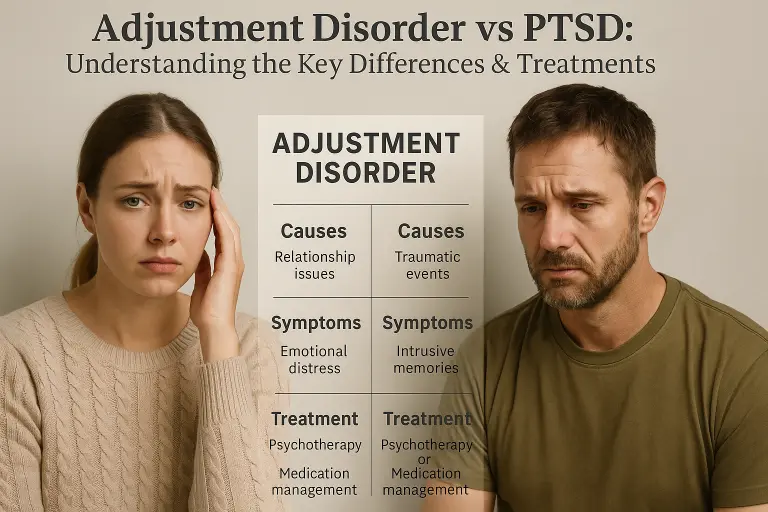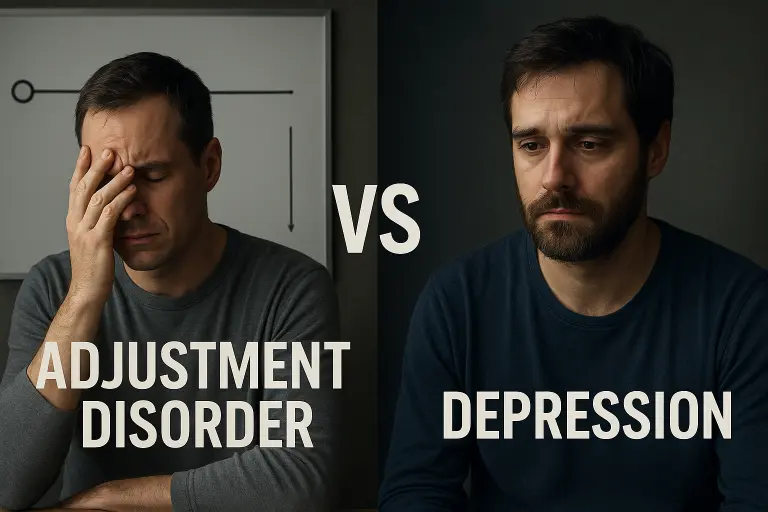Understanding the Effects of Trauma on the Nervous System
Trauma's Deep Impact on Brain and Nervous System Function

Unraveling the Neurobiological Consequences of Trauma
Trauma is a complex physiological and psychological response that profoundly influences the nervous system and brain development. Understanding how trauma affects neural circuitry, neurochemistry, and overall health is crucial for facilitating effective intervention and recovery. This article explores the intricate biological mechanisms underpinning trauma's effects, the symptoms of nervous system dysregulation, and approaches to healing.
The Neural Architecture of Trauma: Brain Regions and Their Roles

How does trauma affect brain development and function?
Trauma has profound effects on brain development and ongoing functioning by disturbing the neural systems involved in emotion, cognition, and stress regulation. When a person experiences trauma, the body's stress response systems, particularly the hypothalamic-pituitary-adrenal (HPA) axis, become hyperactive. This activity results in increased and often dysregulated release of cortisol, a stress hormone that can alter brain structures.
Key brain areas affected by trauma include the amygdala, hippocampus, and prefrontal cortex. The amygdala, which processes fear and emotional responses, can become hyperactive, making individuals more vigilant and reactive to perceived threats. The hippocampus, essential for memory and distinguishing past from present experiences, tends to shrink or become less functional under chronic stress. The prefrontal cortex, involved in rational thinking and impulse control, often shows reduced activity, impairing decision-making and emotional regulation.
Chronic trauma, especially during early sensitive periods, can lead to neuronal loss, diminished synaptic connections, and disrupted myelination. These structural changes impair memory formation, executive function, and emotional resilience. Moreover, trauma influences gene expression through epigenetic modifications, further compromising neural plasticity and stress responses.
How does trauma affect brain regions (amygdala, hippocampus, prefrontal cortex)?
| Brain Region | Effect of Trauma | Functional Consequences | Additional Details |
|---|---|---|---|
| Amygdala | Hyperactivation | Enhanced fear responses, hypervigilance, anxiety | Increased activity leads to exaggerated emotional reactions |
| Hippocampus | Reduced volume, impaired function | Memory difficulties, trouble distinguishing past from present | Structural shrinkage due to elevated cortisol levels |
| Prefrontal Cortex | Decreased activity and connectivity | Poor impulse control, decision-making deficits, emotional dysregulation | Reduced capacity for rational thought and regulation |
How does trauma affect neurochemical activity (cortisol, neurotransmitter dysregulation)?
Trauma triggers changes in neurochemical systems that sustain heightened arousal and emotional distress. Elevated cortisol levels, resulting from HPA axis activation, can become maladaptive when sustained over time, damaging neurons and interfering with normal brain development.
Neurotransmitter imbalances are also common. Increased norepinephrine and dopamine levels heighten alertness and emotional reactivity, while decreased serotonin contributes to depression and anxiety. GABA activity, responsible for calming neural activity, often diminishes, leading to overexcited neural circuits. These chemical changes further reinforce hyperarousal and intrusive memories.
What are the long-term neurobiological effects of trauma?
Persistent trauma can lead to lasting neural changes, such as increased amygdala activity and a diminished prefrontal cortex, making individuals more reactive to stress and less capable of emotional regulation. The hippocampus may remain reduced in size, impairing memory and context discrimination.
These alterations contribute to the development of stress-related disorders like PTSD and depression. Furthermore, neurochemical imbalances perpetuate hypervigilance, emotional dysregulation, and cognitive difficulties. The brain's plasticity offers avenues for healing; interventions targeting neurochemical regulation and neural rewiring can reduce these long-standing effects.
Understanding these neurobiological impacts underscores the importance of early intervention and trauma-informed care, aimed at restoring healthy brain functioning and resilience.
| Brain Area | Changes Due to Trauma | Impact on Functionality | Related Disorders/Implications |
|---|---|---|---|
| Amygdala | Hyperactivity, increased size | Heightened fear, hypervigilance | PTSD, anxiety disorders |
| Hippocampus | Reduced volume, impaired neurogenesis | Memory problems, difficulty distinguishing past and present | PTSD, memory impairment |
| Prefrontal Cortex | Reduced activity, weaker connectivity | Poor impulse control, emotional instability | Impulsivity, emotional dysregulation, depression |
| Neurochemical Systems | Elevated cortisol, norepinephrine; decreased serotonin and GABA | Increased stress responses, depression, anxiety | Chronic stress effects, mood disorders |
This neurobiological understanding of trauma highlights the importance of treatments that aim to rebalance brain chemistry, enhance neural plasticity, and restore healthy functioning, ultimately supporting recovery and resilience.
Trauma's Impact on the Nervous System and Its Regulation
How long does it take for nerves to recover after trauma?
Nerve healing after trauma varies depending on the injury's severity and type. In most cases where nerves are intact but damaged, recovery can take approximately 6 to 12 months. Regeneration typically proceeds at about 1 millimeter per day or roughly one inch per month in healthy young adults.
Signs of nerve regeneration include sensations like tingling or electric shocks. Supportive therapies such as physical therapy, massage, and supplements like magnesium and alpha-lipoic acid can aid recovery. Age can influence healing speed, with older individuals often experiencing slower nerve regeneration.
For severed or severely damaged nerves, recovery might be incomplete or take longer. In some cases, surgical intervention is required. Overall, patience and targeted therapy are vital in promoting nerve recovery after trauma.
What are common symptoms of a dysregulated nervous system?
A nervous system that is out of balance can manifest a broad spectrum of symptoms. Psychological indicators include mood swings, heightened anxiety, depression, irritability, emotional numbness, and feelings of being overwhelmed.
On the physical level, common symptoms involve headaches, muscle tension, chronic pain, digestive disorders like IBS, fatigue, disturbed sleep, and a weakened immune response.
Cognitive symptoms include memory issues, difficulty concentrating, brain fog, and hypersensitivity to stimuli. Dysregulation can lead to emotional states like hyperarousal—characterized by anger, impulsivity, and racing thoughts—or hypoarousal, marked by numbness, low energy, and depressive moods.
These symptoms reflect an imbalance between the sympathetic (fight or flight) and parasympathetic (rest and digest) nervous systems, often due to trauma or chronic stress.
Can emotional trauma cause neurological issues?
Yes, emotional trauma can induce significant neurological changes in the brain. It impacts vital regions such as the amygdala, hippocampus, and prefrontal cortex.
Alterations include increased emotional reactivity, difficulties with memory, and compromised impulse control. These changes can produce symptoms akin to neurological problems, including hypervigilance, heightened anxiety, and emotional dysregulation.
Importantly, the brain's neuroplasticity means it can reorganize and heal over time. With appropriate therapeutic support, individuals often experience improvements, highlighting that trauma-related neurological changes are often reversible rather than permanent damages.
Understanding this neurobiological impact underscores the importance of trauma-informed approaches to treatment and recovery, promoting resilience and healing.
Neuroplasticity and Rewiring the Traumatized Brain
 Rewiring the nervous system after trauma is a hopeful process grounded in the brain's capacity for neuroplasticity—the ability to form new neural connections throughout life.
Rewiring the nervous system after trauma is a hopeful process grounded in the brain's capacity for neuroplasticity—the ability to form new neural connections throughout life.
Neuroplasticity plays a crucial role in trauma recovery as it allows the brain to adapt, change, and rebuild healthier pathways. When trauma causes the amygdala to become hyperactive and the prefrontal cortex to weaken, targeted interventions can help restore balance and improve emotional regulation.
Evidence-based therapies such as EMDR (Eye Movement Desensitization and Reprocessing), neurofeedback, Cognitive Behavioral Therapy (CBT), and mindfulness practices are instrumental in promoting neural rewiring. EMDR, for example, uses eye movements or bilateral stimulation to facilitate the reprocessing of traumatic memories, reducing their emotional charge. Neurofeedback trains individuals to modify brain activity patterns, encouraging healthier responses to stress.
CBT helps identify and challenge distorted thoughts linked to trauma, supporting cognitive restructuring. Mindfulness and meditation foster present-moment awareness, reducing hyperarousal and enhancing neuroplasticity. These approaches target specific impacted brain regions, gradually restoring normal functioning.
Lifestyle factors also significantly support the brain’s ability to rewire. Regular exercise stimulates neurogenesis and releases neurochemicals like endorphins and brain-derived neurotrophic factor (BDNF), which bolster neural growth. Adequate sleep, stress management techniques, and a nutritious diet contribute to overall brain health and resilience.
Developing supportive routines and engaging in trauma-informed therapy can further facilitate emotional regulation and cognitive recovery. Consistency is vital, as brain change often occurs gradually through repeated, positive experiences.
It’s important to recognize that healing from trauma involves a gradual process that varies for each person. With patience and proper therapeutic support, the brain can forge new pathways that reduce trauma symptoms and foster well-being.
Understanding how neuroplasticity works offers hope and expands the possibilities for recovery, emphasizing the importance of comprehensive, holistic approaches to trauma healing.
For deeper insights, searching for "neuroplasticity trauma healing" and "therapeutic approaches for rewiring brain" can provide more information on available treatments and strategies.
Effects of Trauma on Brain Development in Children and Adolescents

How does trauma affect brain development and function?
Trauma has a profound impact on brain development, especially when it occurs during sensitive periods in childhood. It disrupts neural circuits vital for emotional regulation, thinking, and managing stress. When a child experiences trauma, their body's stress systems, such as the hypothalamic-pituitary-adrenal (HPA) axis, become dysregulated, often leading to abnormal cortisol levels. This hormonal imbalance can cause structural changes in key brain areas, notably the hippocampus, prefrontal cortex, and amygdala.
Chronic trauma can lead to neuronal loss, affecting how memory and emotion are processed. It also impairs synaptic pruning and delays myelination, which are crucial for efficient neural communication. These changes result in difficulties with memory, decision-making, and emotional control. Moreover, trauma influences gene expression through epigenetic mechanisms, further modifying neural plasticity. Without intervention, these neurobiological alterations can increase the risk of developing mental health disorders later in life.
How does trauma impact the neurodevelopment of children?
Trauma disrupts normal brain development by impairing areas responsible for handling emotions, cognition, and stress. Children exposed to traumatic events often show increased activity in the amygdala, the brain's emotional alarm system, leading to heightened fear and hypervigilance. Simultaneously, the prefrontal cortex, which helps with rational thinking and impulse control, becomes less active. The hippocampus, essential for memory and learning, often shows reduced volume after trauma.
These neurodevelopmental changes can result in behavioral issues such as impulsivity, difficulty managing emotions, and attachment problems. Developmentally, such children might struggle with trusting others or forming healthy relationships. The effects are often persistent, affecting academic performance and social interactions. Longer-term, these early brain alterations increase vulnerability to depression, anxiety, and other mental health challenges, highlighting the importance of early trauma detection and intervention.
Long-Term Physical and Mental Health Effects of Trauma

What are the long-term health consequences of childhood trauma?
Childhood trauma has far-reaching effects on both physical and mental health that can persist throughout a person's life. Research, including the renowned ACE (Adverse Childhood Experiences) Study, shows that early traumatic experiences significantly increase the risk of developing chronic health conditions in adulthood. These include cardiovascular diseases like heart attack and stroke, metabolic disorders such as diabetes, autoimmune diseases, and even certain types of cancer.
Psychologically, trauma in childhood can lead to mental health disorders such as post-traumatic stress disorder (PTSD), depression, anxiety, and substance use disorders. These conditions often coexist, complicating diagnosis and treatment. Underlying these health issues are persistent changes in neurobiological systems, including dysregulation of the hypothalamic-pituitary-adrenal (HPA) axis, neuroinflammation, and blood vessel damage, all of which stem from the body's prolonged stress response.
The neurobiological changes involve increased activity in the amygdala (the brain's fear center), reduced functioning in the prefrontal cortex (responsible for reasoning and impulse control), and hippocampal damage affecting memory and stress regulation. These alterations make individuals more sensitive to stress and less capable of emotional regulation, heightening vulnerability to various illnesses.
Overall, early intervention is crucial to prevent or mitigate these long-term outcomes. Recognizing and addressing trauma early can help alter its trajectory, reducing the risk of chronic disease and improving quality of life.
What are the societal and economic impacts of childhood trauma?
The impact of childhood trauma extends beyond individual health, affecting society at large both economically and socially. In the United States, the annual cost associated with child abuse and neglect has been estimated at around $103.8 billion. This sum accounts for healthcare expenses, educational challenges, involvement with the criminal justice system, and lost productivity.
Traumatized children often face difficulties in school, exhibiting behavioral problems that can lead to dropout or early involvement with juvenile justice systems. These issues can persist into adulthood, increasing the risk of long-term health problems and disabilities.
Economic costs are compounded by mental health treatment needs, emergency medical care, and increased social services. Society bears the burden of higher health care costs, increased crime, and reduced workforce productivity.
Addressing trauma proactively through prevention programs, early intervention, and trauma-informed care can greatly reduce these long-term costs. Investing in supportive adult relationships, safe environments, and mental health services not only benefits suffering individuals but enhances societal well-being and economic stability.
| Aspect | Impact | Details |
|---|---|---|
| Chronic Health Conditions | Increased risk | Heart disease, stroke, diabetes, autoimmune disorders, cancers |
| Mental Health Disorders | Elevated prevalence | PTSD, depression, anxiety, substance use, personality disorders |
| Economic Burden | High societal costs | Healthcare, legal, social services, lost productivity |
| Societal Effects | Educational and behavioral challenges | Poor school performance, juvenile justice involvement |
Understanding these profound effects underlines the importance of early support and trauma-informed policies aimed at reducing the long-term toll of childhood trauma.
Pathways to Healing and Resilience
Understanding the profound impact of trauma on the nervous system and brain development underscores the importance of early intervention, trauma-informed therapies, and lifestyle modifications. Harnessing neuroplasticity offers hope for recovery, allowing individuals to rewire their neural circuits toward healthier patterns of functioning. Through ongoing research, clinical innovation, and compassionate care, we can support trauma survivors in reclaiming their mental and physical health, fostering resilience that endures across a lifetime.
References
- Understanding the Impact of Trauma - NCBI
- Neurobiology of Trauma - University of Northern Colorado
- The Effects of Complex Trauma on the Nervous System - Tim Fletcher
- Trauma and the Nervous System - Khiron Clinics
- Post-traumatic stress disorder: the neurobiological impact of ...
- How the Nervous System Responds to Trauma - NICABM
- Effects | The National Child Traumatic Stress Network
More Resources
A team ready to start your journey.
Get in touch — today.
We are a safe space – a haven for exceptional individuals to receive discreet, personalized, in-person treatment and care.
.avif)









